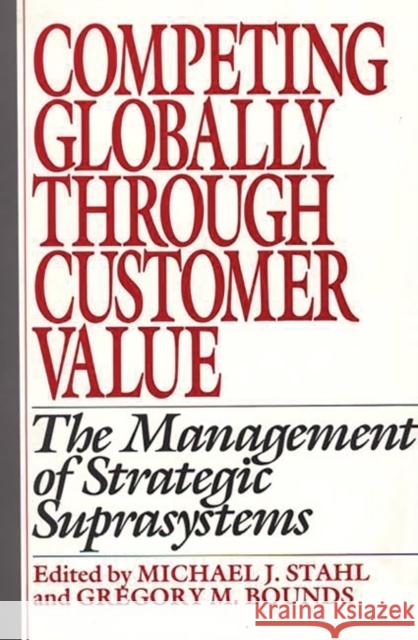Competing Globally Through Customer Value: The Management of Strategic Suprasystems » książka
Competing Globally Through Customer Value: The Management of Strategic Suprasystems
ISBN-13: 9780899306001 / Angielski / Twarda / 1991 / 848 str.
This unique volume sets forth a managerial paradigm for helping companies to compete and prosper in a global market that is increasingly dominated by Japan, Germany and the emerging EEC. While emphasis on short-term profitability has been widely recognized as a serious handicap for companies that compete internationally, editors Stahl and Bounds reveal the full scope of the competitiveness problem. Traditional business theory, practice, and culture are deeply rooted in short-term, non-customer-oriented indicators such as stock price, volume of shipments, and quarterly earnings. These indicators, however, are no longer effective. According to Stahl and Bounds, companies need to structure themselves around net customer value--what the customer receives minus what the customer sacrifices. The book shows how organizations that focus on net customer value will ultimately enjoy more profits, market share, and customer loyalty than those based on short-term financial results. The contributors propose, as an alternative management model, a detailed, analytic paradigm that provides specific ways to identify, measure, monitor, produce, and improve customer value. Most importantly, they demonstrate why U.S. companies that want to survive and prosper in a competitive global economy will benefit from this management model.
Delivering customer value involves all areas of business management. This book provides a significant methodological breakthrough by proposing new models for costing, product development, production and inventory control, process control, logistics management, marketing, finance, and human resources. With contributions by 42 authors from academia and business, this volume delineates structural systems and practical programs for obtaining better business results through improved quality and customer satisfaction. Many of the top Fortune 500 corporations are now training their managers in the customer value paradigm. Managers in competitive markets who do not fully understand the tenets, implications, and techniques of the customer value model set forth in this book face a serious barrier to business success.











